Did you know Nasturtium Seeds are edible? In fact, Nasturtium leaves and Nasturtium flowers are also edible! This Nasturtium Recipe will show you how to make your own "Poor Man's Capers" by pickling the Nastrutium seeds in brine. Pickled Nasturtium pods can be used as a substitute for capers in many recipes, including my Potato Salad recipe.
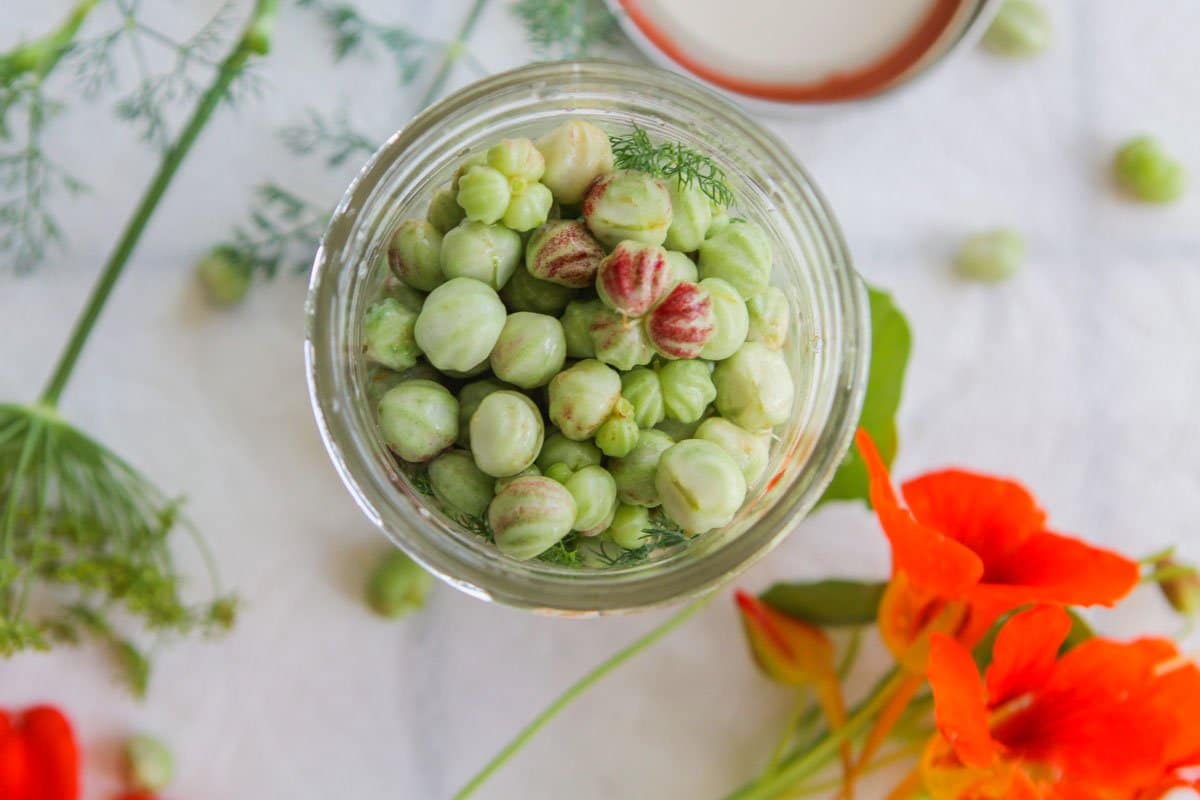
Nasturtiums, the Edible Flowers
If you are a fan of capers, you will love Pickled Nasturtium Seeds even more! I still remember the first time I learned that Nasturtium flowers are edible. It was many years ago, while my mother-in-law, was visiting us for the summer from Arizona.
Marlene mentioned that nasturtium flowers were edible and could be added to salads. The flowers have a spicy, peppery flavor. Since then, I've learned that not only are the flowers edible, but practically the entire plant. Nasturtium leaves are edible too and have many culinary uses.
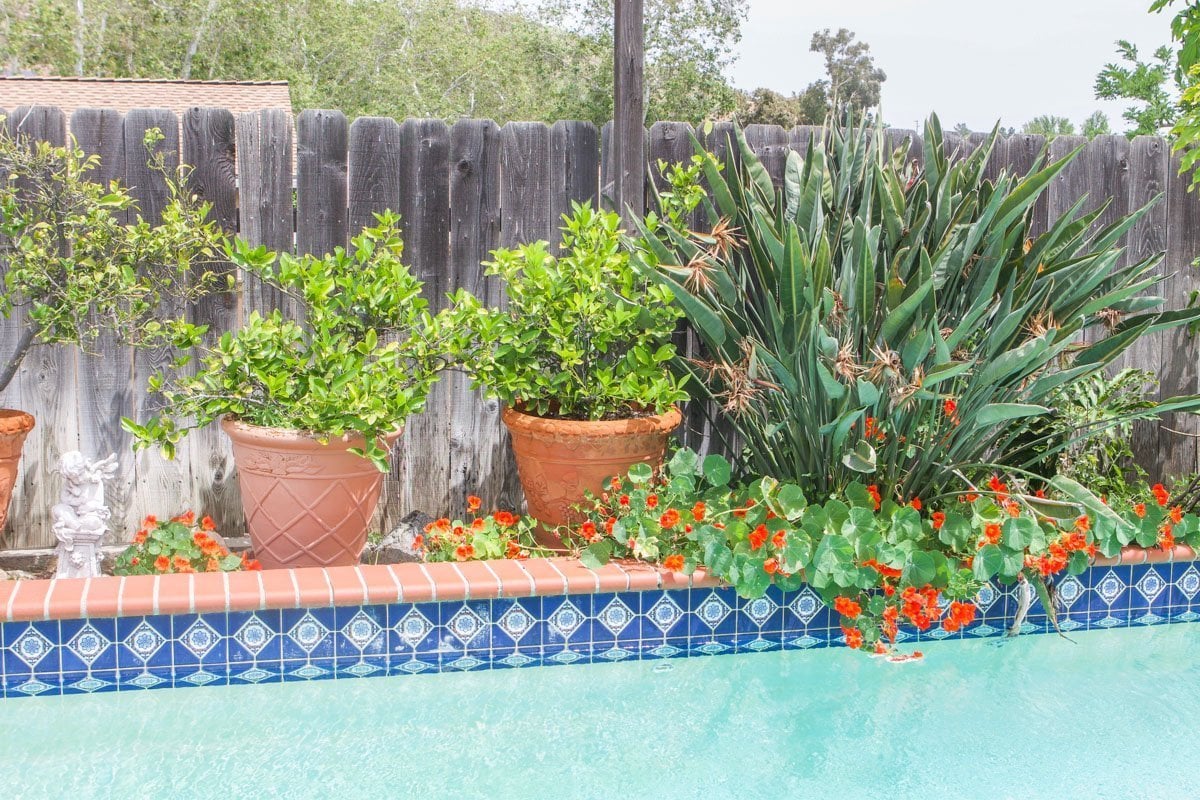
Why This Recipe Works
The Nasturtium Plant is gorgeous and easy to grow if you're in the right climate. And if you are lucky enough to grow this plant, there are so many Nasturtium recipes that you can create using the various parts of the plant. This includes the nasturtium flowers, leaves, and seeds/pods!
This nasturtium recipe is a great way to utilize the plant's peppery seeds by pickling them in the same way you would pickle Cucumbers. If capers had cousins, it would be nasturtium seeds. Nasturtium seeds taste very similar to capers, but unlike their expensive cousins, nasturtium seeds are free for picking! So why wouldn't you use them to make these tasty, Mock Capers?
What You Need to Make This Recipe

How to Make Pickled Nasturtiums
STEP 1: Pick nasturtium seeds from nasturtium plants in spring or summer.
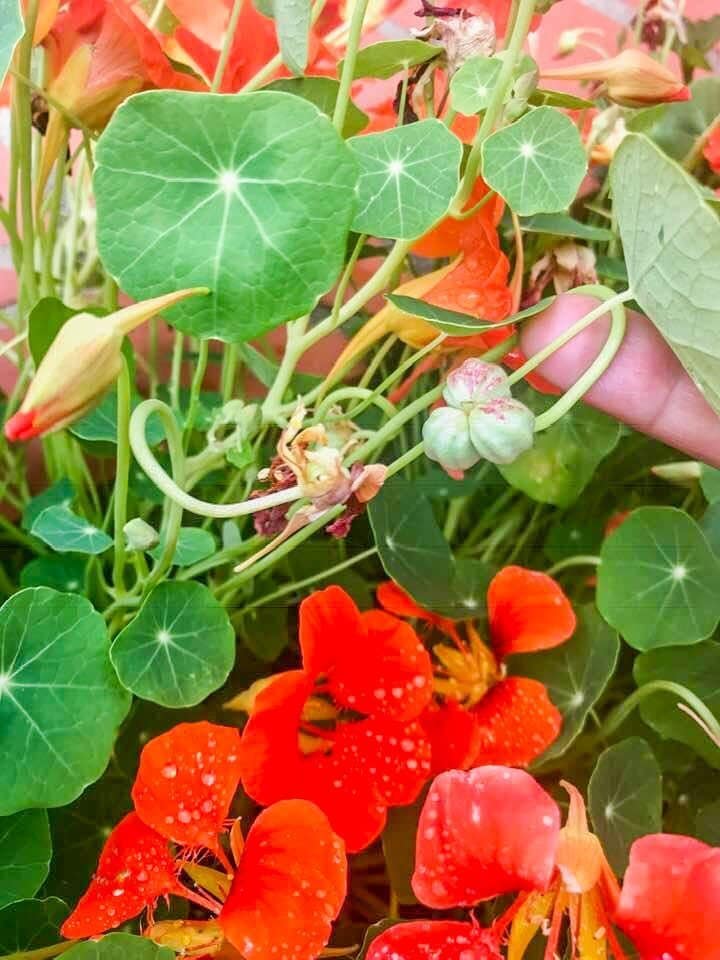
STEP 2: Place nasturtium seeds into a bowl of cold water and swirl them around to remove dirt and debris. The dried stems and flowers will float to the surface.
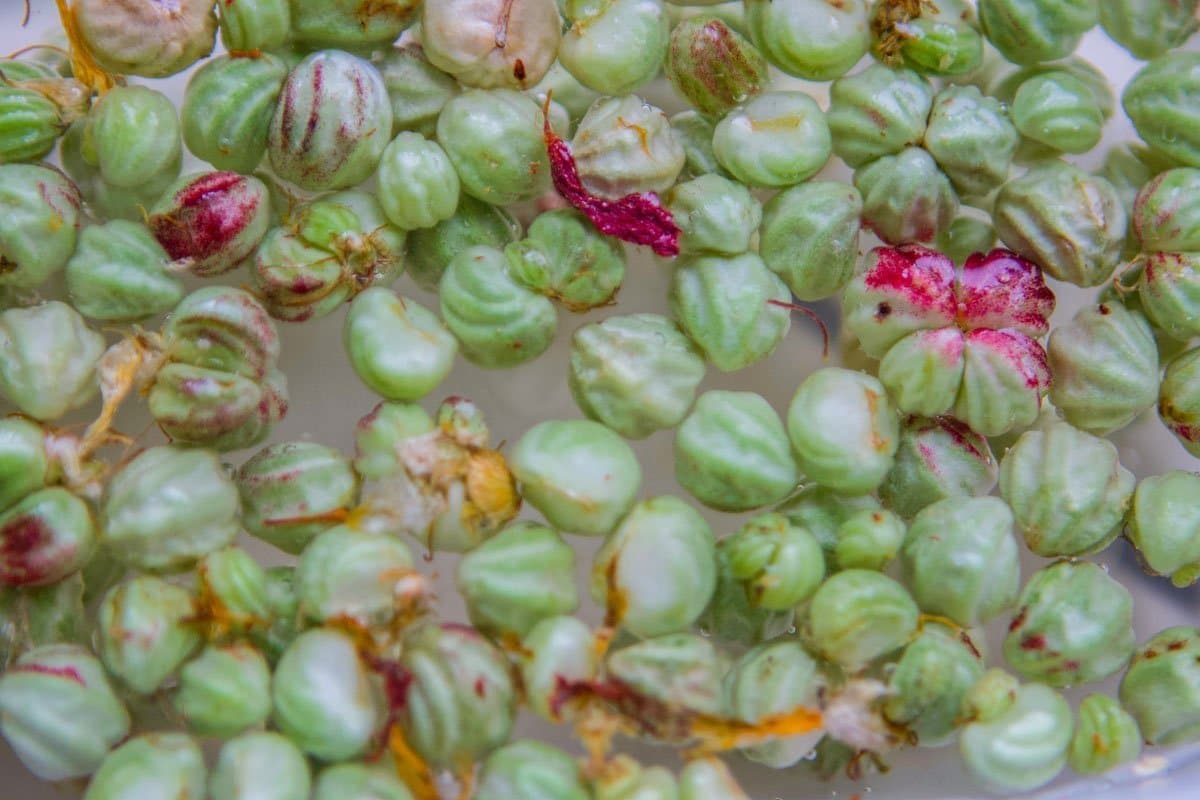
STEP 3: Add clean pods to an 8-ounce pickling jar. Fill a small saucepan with water, vinegar, salt, and sugar, and bring to a boil. Add a few sprigs of fresh dill to the jar, then pour pickling solution over the pods.
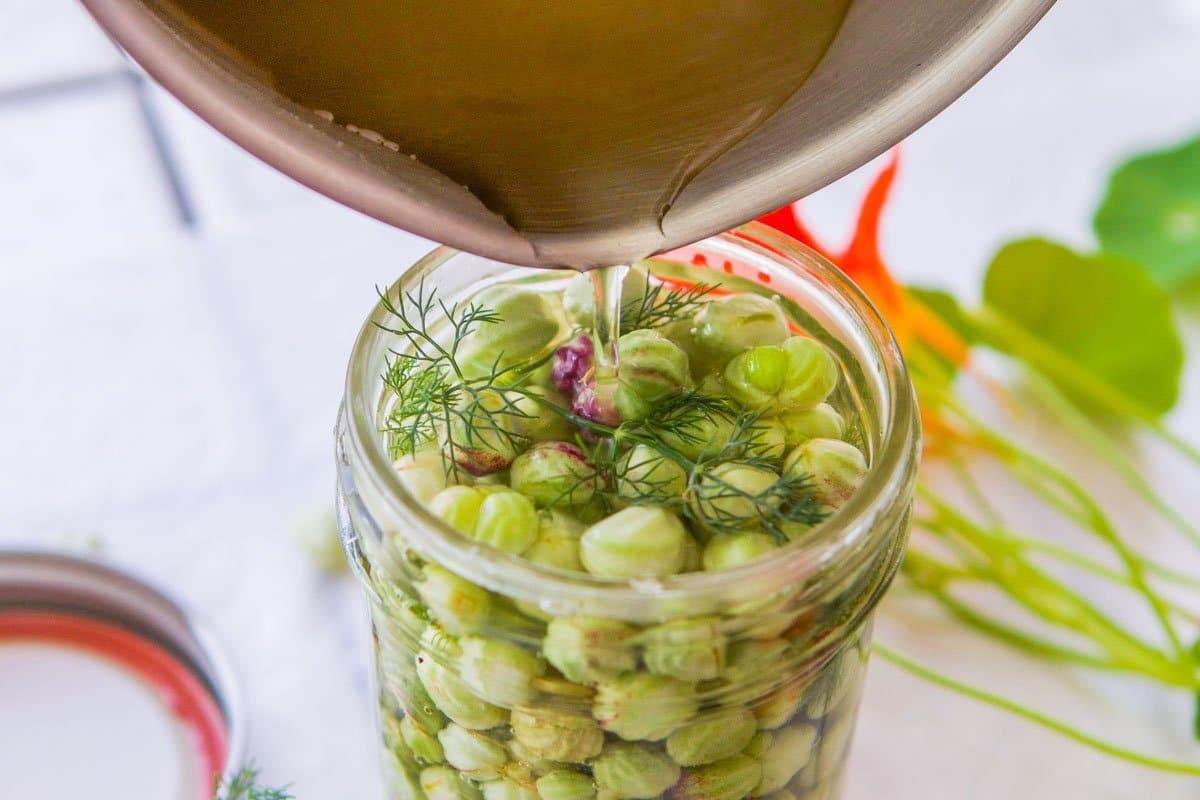
STEP 4: Seal and place in a dark, cool, spot. Allow to pickle for at least one to two weeks. Store in the refrigerator after that.
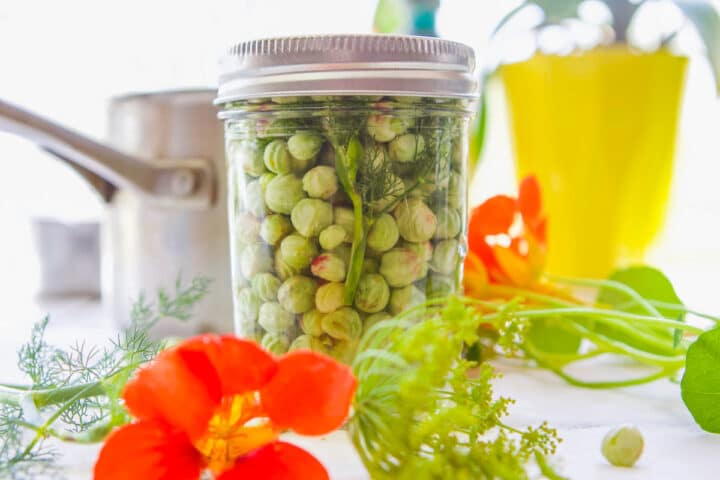
How to Enjoy Pickled Nasturtium Seeds
As I mentioned earlier, Pickled Nasturtium Seeds can be used as an alternative to capers in most recipes. Here are some ways to enjoy edible nasturtium seeds:
- Use pickled nasturtium seeds on bagels and lox instead of capers.
- Add nasturtium seeds to creamy pasta dishes.
- Use pickled nasturtium seeds as a topping for Deviled Eggs.
- Add a handful of the poor man's capers in with chickpeas when making Hummus.
- Toss a handful of pickled nasturtium seeds in green salads to add texture and a little spice.
- Add nasturtium seeds to potato salad, the flavors are like a marriage made in heaven.
Recipe FAQs
Capers are the buds of the plant "Capparis Spinosa." Capers are not seeds, but unopened flower buds that are picked before maturing. The buds are then dried and brined.
The entire Nasturtium plant is edible and can be incorporated into many recipes! Nasturtium flowers are edible and can be used in salads, jam, or to flavor vinegar. Nasturtium flowers can also be stuffed with cream cheese or other spreads. Finally, the flowers are perfect for decorating a cake.
Nasturtium leaves can be used in place of basil to make pesto. The larger leaves can be used instead of grape leaves to make Dolma. Nasturtium leaves can even be added to a sandwich if you're out of mustard, they have a similar flavor!
Finally, Nasturtium Seeds are also edible and when pickled, comparable to capers. Dare I say, even better?
Recipe Pro Tips
- If you think you might find the flavor too strong, brine the seeds in a mixture of two cups water and ¼ cup salt for 3 to 5 days. Rinse the seeds and continue with the recipe steps.
- The extra brining time mellows out the flavor, but I personally prefer the strong flavor.
- Pickle the nasturtium seeds for at least 2 weeks, longer would be even better.
- Store pickled nasturtium seeds in the refrigerator for up to 6 months.
- If pressure canning, pickled nasturtium seeds can be stored in a cool, dark location for up to a year.
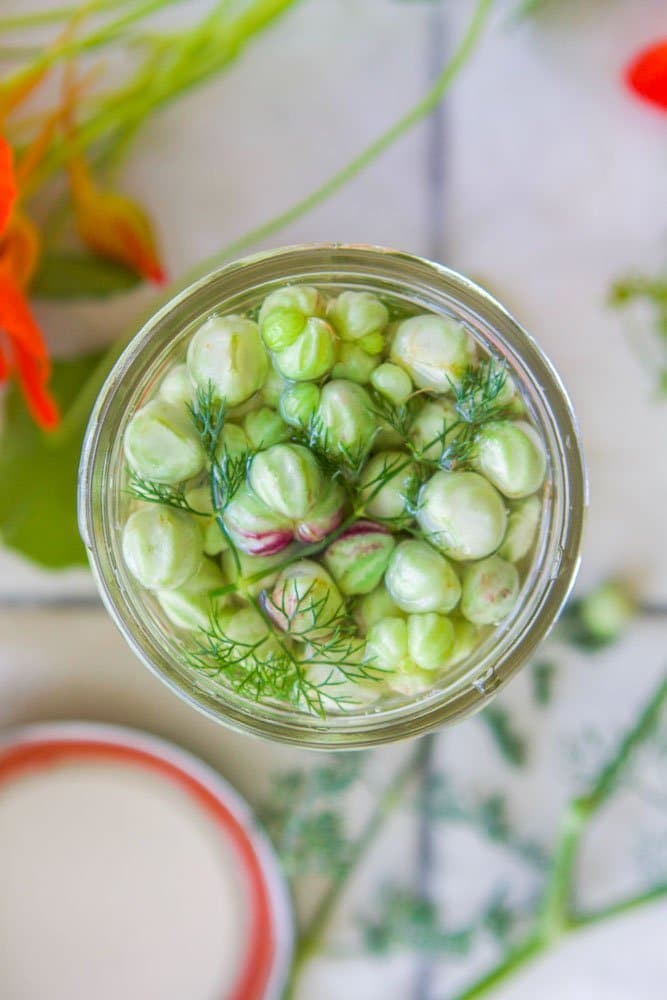
Love this recipe? Please leave a 5-star 🌟🌟🌟🌟🌟rating in the recipe card below & a review in the comments section further down the page.
Stay in touch with me through social media @ Instagram, Pinterest, TikTok, and Facebook. Don't forget to tag me when you try one of my recipes!
📖 Recipe
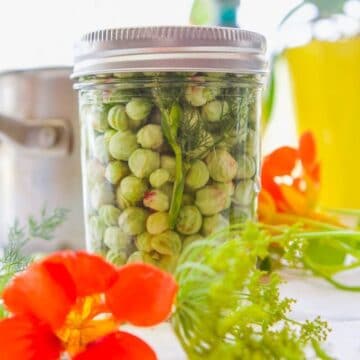
Pickled Nasturtium Seeds
Ingredients
- 1 cup nasturtium pods/seeds
- ⅓ cup cider vinegar
- ⅓ cup water
- 1 tablespoon sea salt
- ½ teaspoon sugar
- 2 sprigs fresh dill
Instructions
- Pick nasturtium seeds from nasturtium plants in spring or summer.
- Place nasturtium seeds into a bowl of cold water and swirl them around to remove dirt and debris. The dried stems and flowers will float to the surface.
- Add clean pods to an 8-ounce pickling jar. Fill a small saucepan with water, vinegar, salt, and sugar, and bring to a boil. Add a few sprigs of fresh dill to the jar, then pour pickling solution over the pods.
- Seal and place in a dark, cool, spot. Allow to pickle for at least one to two weeks. Store in the refrigerator after that.
Notes
- If you think you might find the flavor too strong, brine the seeds in a mixture of two cups water and ¼ cup salt for 3 to 5 days. Rinse the seeds and continue with the recipe steps.
- The extra brining time mellows out the flavor, but I personally prefer the strong flavor.
- Pickle the nasturtium seeds for at least 2 weeks, longer would be even better.
- Store pickled nasturtium seeds in the refrigerator for up to 6 months.
- If pressure canning, pickled nasturtium seeds can be stored in a cool, dark location for up to a year.

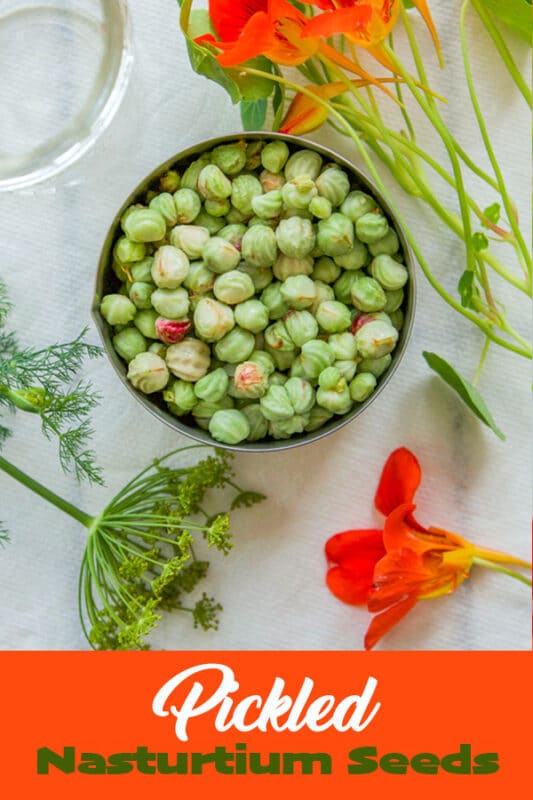
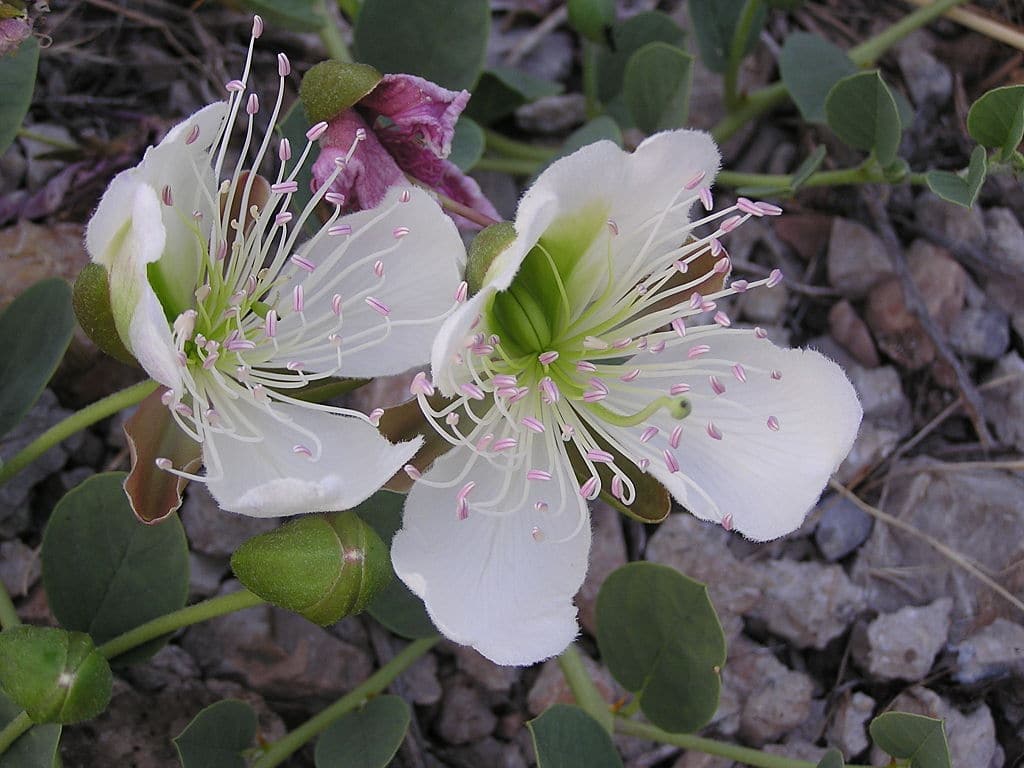
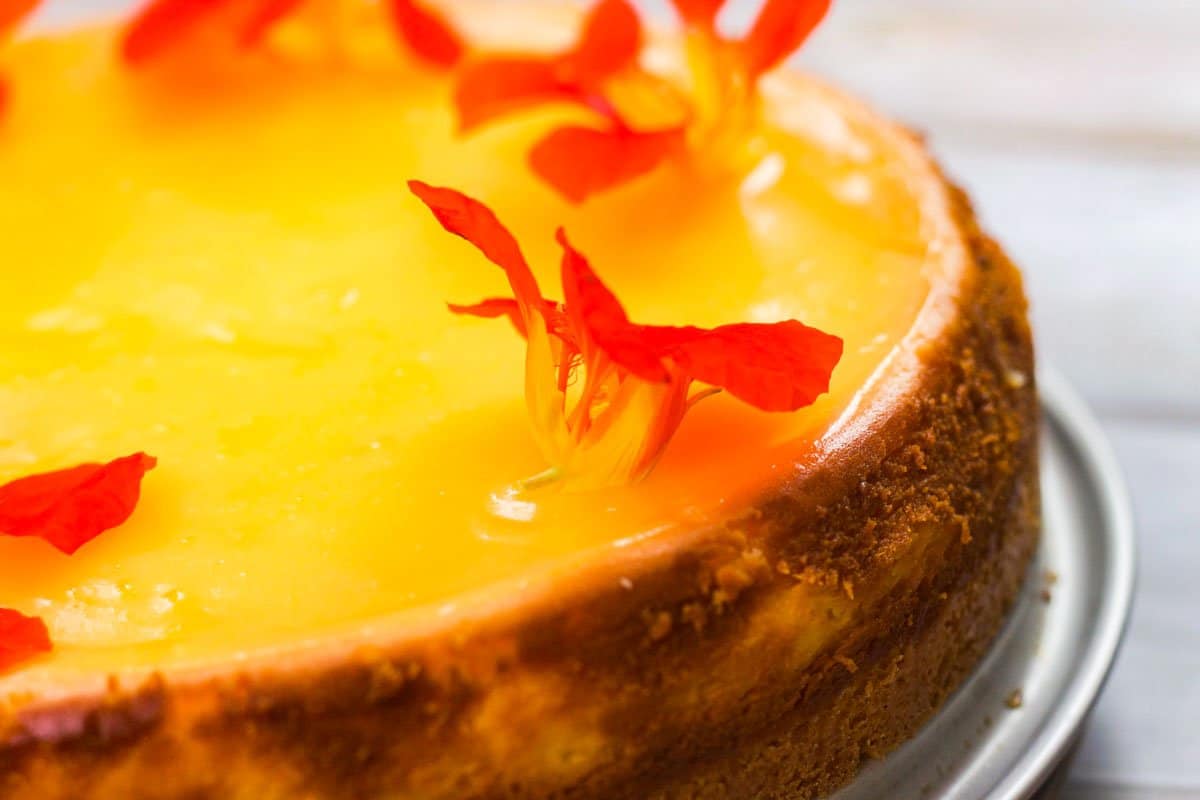
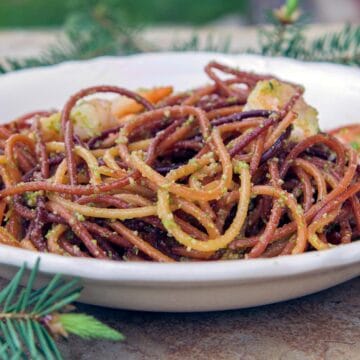
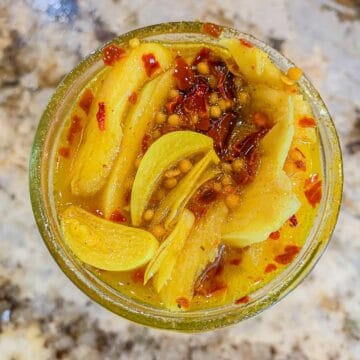
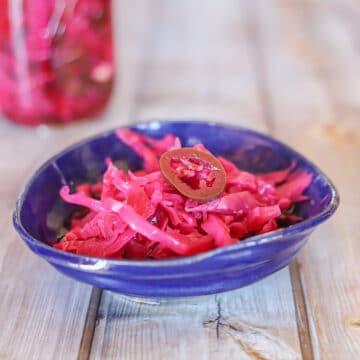
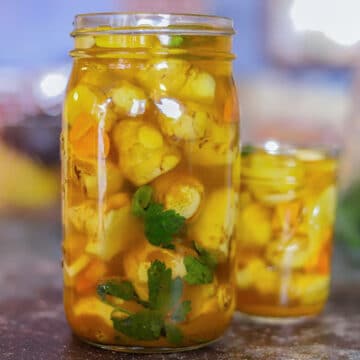
Ella says
Question: by "seal" do you mean to can by your preferred method or just to close the jar?
Hilda Sterner says
Hi Ella,
I mean tighten the jar lid. If it will be stored for any length of time it would be wise to process it for longer storage. I usually only make 1 jar so it ends up in the fridge. I hope that answers your question.
H.D. Greaves says
Hello, my name is H.D. Greaves, an author with books on Amazon (Please, look me up on Amazon - you may find my books interesting). I live in Port of Spain, Trinidad, where I was born and raised. I'm now 83, still writing, working on another novel. Many years ago a dear friend who has since died gave me a jar of pickled geranium seeds. I loved them and have, over all these years, thought about that dear lady and her delicious and unusual gift. I decided it was high time that I looked up the recipe and made them myself, as much to honour Marian as to enjoy the pickles again. I've sent for the geranium seeds from the U.S. via a friend. They are not illegal here, but hard to find. When they arrive, I'm very much looking forward to the beautiful plants as well as their nutritious and tasty treats - leaves, flowers (which I've enjoyed in salads) and the pickled seeds. So I thank you for your fine blog and recipe! H.D. Greaves in Port of Spain, Trinidad, Republic of Trinidad and Tobago
Hilda Sterner says
Thank you for the comment and story. I didn't realize you could do the same with geranium seeds, all those years of growing geraniums, wasted! Enjoy your pickled seeds and keep up the writing!
Rosemary Foster says
What a lovely article, we often eat the nasturtium flowers and seeds while gardening and I have put the flowers on salads which looks very exotic and makes a showy salad when guests come over !.
This year we will be pickling some as we like capers but as you say the nasturtiums are nicer, its that burst of heat that does it.
Thank you for taking the time to do this
Kind Regards
Rosemary (UK)
Hilda Sterner says
Hi Rosemary,
Thank you so much for the lovely review! The nasturtiums are one of the things that I miss about California. But Montana has so much more to offer, including huckleberries, so I won't complain. 😉
Michele says
Hi Hilda. I just had pickled nasturtium seeds in a dish prepared by a friend yesterday and they were very interesting and tasty. Just checking on one thing here...Since you bring the water to a boil, this would kill any bacteria (good or bad) and therefore this recipe is not a fermentation, is that correct?
Hilda Sterner says
Hi Michelle,
Fermented food usually doesn't have vinegar added to them. The food’s sugars and present bacteria cause a chemical reaction that creates acidity. So I wouldn't necessarily call this a fermented recipe. However, if you are worried about boiling the brine, you can allow it to cool off before pouring it into the jars. I hope that helps!
Erin says
Hi Hilda,
Just checking that it's one tablespoon of salt in the brine. Sounds a lot but is probably correct.
Hilda Sterner says
Hi Erin
Yes, you are correct, it is one tablespoon of salt in the brine. Good luck!
Louise says
Hi thank you,
Do you need to press the seeds down with a weight to ensure they’re completely submerged?
Hilda Sterner says
Hi Loise,
I haven't had to do that, but you can flip the jar every few days during pickling to get the pods at the top to get submerged.